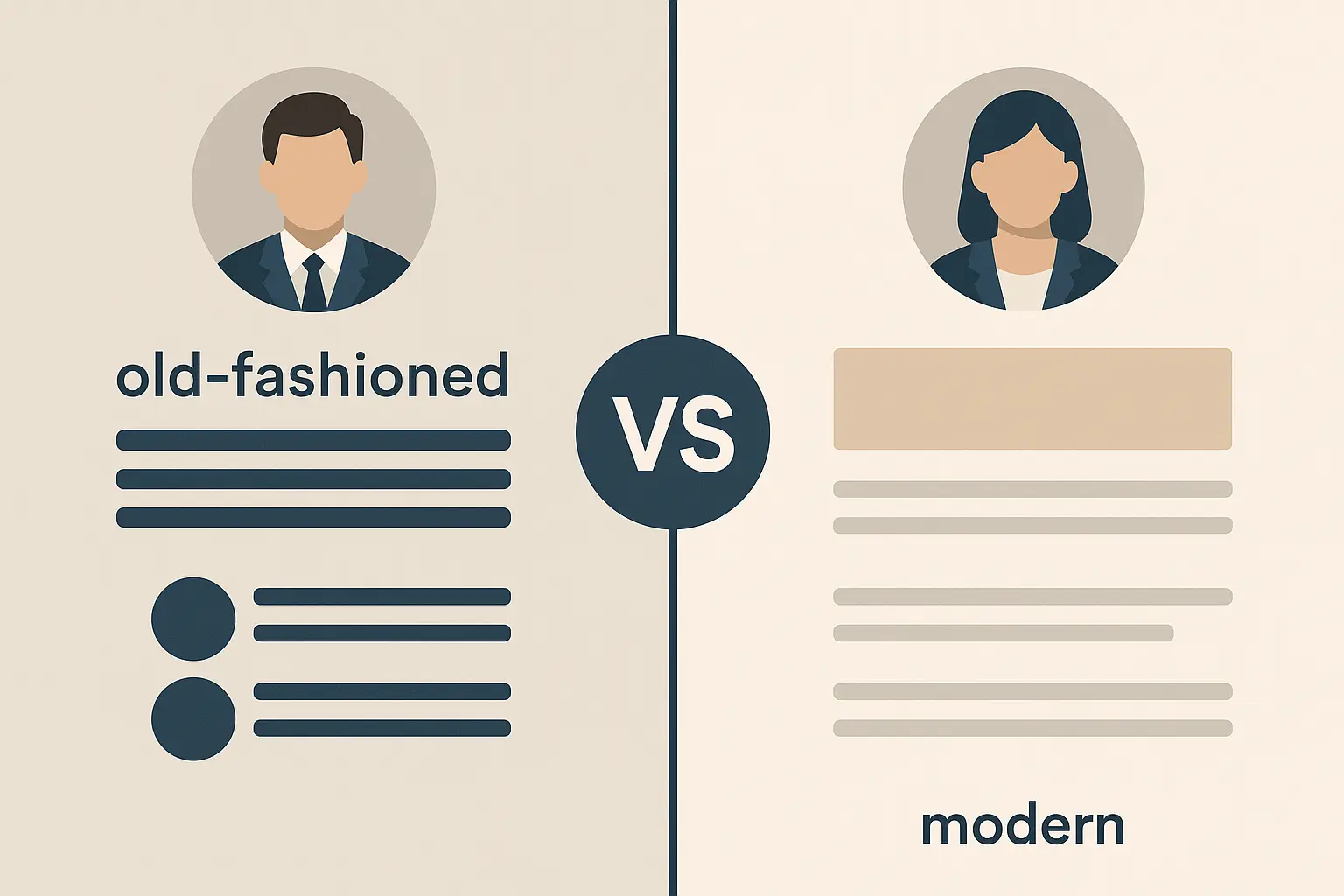Resume Introduction Examples That Actually Get You Hired (And Why Most People Get Them Wrong)

Table of Contents
-
Why Most Resume Introductions Fail (And How to Fix Yours)
-
Different Types of Resume Introductions (And When to Use Each One)
-
How to Write an Introduction That Passes Both Robots and Humans
-
Testing Your Introduction (Because Guessing Doesn’t Work)
-
Customization That Actually Works
-
Final Thoughts
TL;DR
-
You have 6 seconds to make or break your chances – that’s how fast hiring managers decide whether to keep reading
-
Stop telling employers what you want. Start showing them what you can do for them
-
Different career stages need different approaches – entry-level shows potential, senior-level shows results
-
Your introduction must work for both ATS systems and humans without sounding robotic
-
Test different versions and track what gets you interviews, not just what sounds good
-
Customize for each job, but smart – change 20% to match the role, keep 80% consistent
Why Most Resume Introductions Fail (And How to Fix Yours)
Here’s the brutal truth about resume introductions: you have about six seconds to convince someone you’re worth their time. Most people blow it in the first sentence.
Research shows hiring managers make snap judgments within six seconds of looking at your resume. That’s barely enough time to read a tweet, yet that’s when they decide if you make it to the “maybe” pile or straight to the trash.
Your introduction isn’t just grabbing attention anymore – it’s your entire first impression compressed into three sentences. When I look at resume introduction examples that actually work, they all share one thing: they immediately show value instead of stating the obvious.
According to Jobscan research, resumes using the exact job title from the posting were 10.6 times more likely to lead to an interview. That statistic should wake you up to how critical those opening lines really are.
The Six-Second Reality
Hiring managers aren’t being picky when they scan resumes quickly – they’re drowning. Picture reviewing 200+ applications for one position. You’re not trying to be difficult; you’re trying to survive your workload.
Your introduction needs to pack a punch immediately. Every word counts. Generic statements about being “hardworking” or “detail-oriented” won’t cut it anymore. Whether you’re writing your first resume or refining an existing one, those opening lines determine everything.
Think about it this way: if you had six seconds to convince someone to hire you, what would you say? That’s what your introduction needs to accomplish.
Understanding the fundamentals of what makes an effective resume helps you see why these opening moments matter so much for your career success.
The Death of Boring Objectives
Traditional resume objectives that focused on what you wanted from a job are completely dead. They immediately signal that someone hasn’t updated their approach in about a decade.
Old objective: “Seeking a challenging position where I can grow professionally and utilize my skills.”
What does that tell anyone? Nothing. Of course you want a job in your field – why else would you be applying?
Modern resume introductions flip this completely. Instead of talking about what you hope to gain, you focus on what you can offer an employer. You’re presenting yourself as the solution to a specific business problem, not just another person looking for work.
Understanding this shift is crucial when learning how to make a resume that stands out in today’s competitive market. Effective resume introduction examples prioritize employer value over personal aspirations, and the difference in results is dramatic.
Show Value, Don’t State Wishes
Modern introductions work as elevator pitches. Instead of saying you’re seeking a marketing role, you highlight how you increased social media engagement by 150% or launched campaigns that generated $2M in revenue.
Old approach: “Seeking a marketing position where I can utilize my communication skills.”
New approach: “Digital Marketing Specialist with 4 years of experience driving 150% increases in social media engagement and launching campaigns that generated $2M in revenue. Expert in SEO optimization and content strategy with a proven track record of converting leads into loyal customers.”
See the difference? The new version immediately tells employers what you’ve accomplished and what you can do for their company.
Research from Jobscan reveals that 99.7% of recruiters use filters in their ATS or similar systems to find qualified candidates, with 76.4% filtering by skills, 59.7% by education, and 55.3% by job titles. This makes strategic keyword placement in your introduction absolutely essential.
Numbers Speak Louder Than Adjectives
Instead of describing yourself as “highly successful,” state that you “exceeded sales targets by 40% for three consecutive quarters.” This specificity makes your claims more credible and helps hiring managers quickly understand the scale of your achievements.
Pick numbers that matter to your target role. Sales position? Show revenue. Operations job? Show cost savings. Make it relevant.
Different Types of Resume Introductions (And When to Use Each One)
Here’s what most career advice gets wrong: there’s no one-size-fits-all approach to resume introductions. Your career stage, industry, and specific goals all influence which style will work best for your situation.
People try to force themselves into the wrong introduction format and then wonder why they’re not getting responses. The key is matching your introduction style to both your professional reality and your target audience’s expectations.
|
Introduction Type |
Best For |
Key Elements |
Length |
|---|---|---|---|
|
Professional Summary |
Experienced professionals with clear career progression |
Years of experience, key skills, major achievements |
3-4 sentences |
|
Skills-Based Summary |
Career changers, consultants, diverse experience |
Core competencies, transferable skills, relevant certifications |
2-3 sentences |
|
Achievement-Focused |
Sales, project management, results-driven roles |
Specific metrics, quantified results, standout accomplishments |
3-5 sentences |
|
Executive Summary |
C-suite, senior leadership positions |
Strategic impact, organizational transformation, board-level results |
4-6 sentences |
Professional Summary Statements
Professional summaries work for most job seekers because they’re versatile and adaptable. These introductions combine your years of experience, key skills, and most impressive achievements into a compelling paragraph that gives hiring managers a complete picture.
They work particularly well when you have clear career progression and relevant experience for your target role. The beauty of professional summaries is their flexibility – you can adjust the emphasis based on what matters most for each specific role while maintaining consistent core messaging.
Achievement-Focused Summaries
When your track record includes standout accomplishments, leading with specific achievements immediately establishes credibility. These introductions work best for sales professionals, project managers, and anyone in results-driven roles where quantifiable success is highly valued.
Don’t just list what you did – show the impact it had. Select achievements that directly relate to the type of role you’re pursuing and present them in a way that suggests future performance.
Skills-Based Approaches
Skills-focused introductions work well when you have diverse experience or are making a career transition. Instead of emphasizing job titles or years of experience, these summaries highlight your core competencies and how they apply to your target role.
This approach is particularly effective for consultants, freelancers, or professionals with non-linear career paths who need to emphasize capabilities over chronological experience. For those emphasizing technical capabilities, our guide on hard skills for resumes provides comprehensive strategies for showcasing your technical expertise effectively.
Executive-Level Positioning
Senior professionals need introductions that communicate strategic thinking and leadership impact rather than just technical skills. Executive introductions should demonstrate your ability to drive organizational change, manage complex initiatives, and deliver results at scale.
The tone should be confident without being arrogant, and the content should reflect the broader business impact of your work. You’re not just managing tasks – you’re shaping organizations and driving strategic outcomes.
Executive introductions need to communicate board-level thinking and the ability to navigate complex business challenges. These summaries should highlight transformational achievements, such as leading mergers, driving digital transformation, or turning around underperforming divisions.
Career Change Strategies
Career transitions require introductions that address potential employer concerns while highlighting relevant transferable skills. You need to acknowledge your background while clearly articulating why you’re qualified for your target role.
This often involves reframing your experience in terms that resonate with your new industry and demonstrating genuine commitment to the career change.
Career Change Example: “Project Manager transitioning to Digital Marketing Manager. Bringing 8 years of experience leading cross-functional teams with transferable strengths in strategic planning, data analysis, and team leadership. Known for completing projects 20% under budget and boosting team efficiency by 35%. Excited to apply problem-solving and planning expertise to data-driven marketing campaigns.”
Notice how this example acknowledges the transition while immediately establishing relevant transferable skills and quantified achievements. It doesn’t apologize for the career change – it positions it as a strategic move that brings valuable perspective.
When making career changes, understanding the difference between hard and soft skills can help you effectively translate your experience for new industries.
How to Write an Introduction That Passes Both Robots and Humans
Here’s the reality: your resume needs to impress a computer before any human sees it. Most companies use applicant tracking systems (ATS) that scan for keywords first. But once it reaches a real person, it better tell a compelling story.
The trick isn’t choosing between robots and humans – it’s writing for both without sounding like either.
Understanding ATS-friendly resume formatting is essential for ensuring your introduction gets past automated screening systems while remaining compelling to human readers.
As the job market evolves, “63% of respondents in a Resume Lab survey said the most important thing to include is why you want to work for the company” according to HerMoney, emphasizing that personalization and company-specific messaging have become more critical than ever in 2024.
Smart Keyword Integration
Forget about stuffing keywords like you’re making Thanksgiving turkey. Instead, weave them naturally into your accomplishments. If the job posting mentions “project management,” don’t just list it as a skill. Say something like: “Led cross-functional project management initiatives that delivered $2M in cost savings.”
Study the job posting like it’s your final exam. Circle the skills they mention multiple times. Those are your golden keywords. Now work them into sentences that actually make sense.
Quick keyword reality check: Read your introduction out loud. If it sounds like a robot wrote it, humans will notice too.
Different industries and roles prioritize different terminology, and your introduction should reflect the language that’s most relevant to your target position. This might involve studying job postings in your field, reviewing LinkedIn profiles of successful professionals in similar roles, or consulting industry publications to understand current terminology and trends.
Create a keyword bank for your target roles and then naturally incorporate the most relevant terms into your introduction. Don’t force it – if a keyword doesn’t fit naturally, find another way to include it elsewhere in your resume.
The STAR Method in 30 Words or Less
You know the STAR method (Situation, Task, Action, Result)? Compress it into your introduction. Instead of telling a full story, hint at one that makes people want to know more.
Weak: “Experienced marketing professional with strong analytical skills.”
Strong: “Marketing manager who turned a failing campaign into a 40% revenue increase through data-driven strategy pivots.”
See the difference? The second version makes you curious about how they did it.
Adapting this framework for resume introductions helps you tell compelling professional stories in condensed format. Instead of just listing responsibilities, you can briefly describe challenges you faced and the specific results you achieved.
Quantified Results That Matter
Specific metrics and percentages make your achievements more credible and memorable. Rather than saying you “improved efficiency,” state you “streamlined processes that reduced project completion time by 30%.”
Choose numbers that are impressive but believable, and that relate directly to the type of value your target employers are seeking. According to Hloom’s resume statistics research, candidates who “mention percentage increases, cost savings, and time efficiency gains” and “highlight how you applied your statistical skills to enhance data accuracy or improve decision-making speed” significantly improve their chances of standing out to hiring managers.
Resume Introduction Optimization Checklist:
☐ Include exact job title from posting
☐ Incorporate 3-5 relevant keywords naturally
☐ Quantify at least one major achievement
☐ Mention years of relevant experience
☐ Highlight top 2-3 skills from job description
☐ Keep length between 2-4 sentences
☐ Avoid personal pronouns (I, me, my)
☐ Proofread for grammar and spelling
☐ Test readability with others
☐ Customize for each application
Testing Your Introduction (Because Guessing Doesn’t Work)
Stop sending the same introduction to every job and wondering why nothing happens. Smart job seekers test different versions and track what works.
The most effective resume introductions are refined through systematic testing and optimization. Rather than writing one version and hoping for the best, successful job seekers track their results and continuously improve their approach based on real market feedback.
The Simple A/B Test
Write two versions of your introduction. Send version A to 10 jobs, version B to the next 10. Track your interview requests. The winner becomes your new baseline.
What to test:
-
Leading with skills vs. leading with results
-
Industry buzzwords vs. plain English
-
Longer vs. shorter versions
-
Different achievement metrics
Systematic testing of different introduction approaches provides valuable insights into what works best for your specific situation. You can test different versions by tracking application-to-interview conversion rates, or by getting feedback from industry contacts.
Change one element at a time so you can identify what specific changes improve your results.
Recent trends show that “research shows a cover letter can make your application 38% more likely to get noticed” and “as many as 45% of employers may skip over an application that’s lacking a cover letter,” according to the University of Cincinnati, highlighting the importance of comprehensive application materials in 2024.
Track What Actually Matters
Don’t just count applications sent. Count interview requests. That’s your real success metric.
Keep a simple spreadsheet:
-
Date applied
-
Company name
-
Introduction version used
-
Response (yes/no/feedback)
After 20 applications, you’ll see patterns. Maybe your “results-heavy” version works better for sales roles. Maybe startups respond to your “adaptability” version. Use what works.
Measuring the effectiveness of different introduction versions requires keeping detailed records of your job search activities. This data helps you make informed decisions about how to refine your approach.
|
Test Version |
Applications Sent |
Interview Requests |
Response Rate |
Key Changes Made |
|---|---|---|---|---|
|
Version A (Original) |
25 |
2 |
8% |
Baseline version |
|
Version B (Keyword-focused) |
25 |
4 |
16% |
Added industry keywords |
|
Version C (Achievement-heavy) |
25 |
6 |
24% |
Led with quantified results |
|
Version D (Skills-balanced) |
25 |
5 |
20% |
Balanced skills and achievements |
When to Pivot
If you’re not getting interviews after 25 applications, your introduction isn’t working. Don’t send 100 more hoping for different results.
Common fixes that actually work:
-
Add specific numbers if yours are too vague
-
Remove jargon if you’re not getting past ATS
-
Shorten if it’s over four lines
-
Customize more if you’re being too generic
Resume Introduction Testing Template:
Week 1-2: Baseline Testing
-
Send 10 applications with Version A
-
Track response rates and feedback
-
Note which industries/roles respond best
Week 3-4: Keyword Optimization
-
Send 10 applications with Version B (enhanced keywords)
-
Compare response rates to baseline
-
Identify most effective keyword combinations
Week 5-6: Achievement Focus
-
Send 10 applications with Version C (quantified results)
-
Measure improvement in interview requests
-
Refine metrics based on target roles
Week 7-8: Final Optimization
-
Combine best elements from all versions
-
Test refined version on remaining applications
-
Document lessons learned for future use
Customization That Actually Works
Generic introductions get generic results. But you don’t need to rewrite everything for each job. Smart customization means adjusting emphasis, not starting over.
While you should maintain core messaging about your professional value, the most successful job seekers adapt their introductions for specific roles and companies. This doesn’t mean completely rewriting your introduction for every application, but rather adjusting emphasis and language to align with each opportunity’s specific requirements and company culture.
The 80/20 Rule
Keep 80% of your introduction the same. Change 20% to match each specific role. This might mean:
-
Swapping which achievement you lead with
-
Adjusting one key skill based on the job posting
-
Changing industry terminology slightly
This approach maintains your authentic voice and core value proposition while demonstrating that you’ve tailored your application for the specific opportunity.
Company Research That Matters
Don’t research company history or mission statements. Research their current challenges. Are they expanding internationally? Mention your global experience. Are they going digital? Highlight your tech adaptability.
Startup application: Emphasize versatility and rapid learning
Corporate application: Emphasize process improvement and scalability
Non-profit application: Emphasize mission alignment and resource efficiency
Research into specific companies and their values can help you adjust your introduction to resonate with their particular culture and priorities. This might involve emphasizing different aspects of your background, using language that reflects their company values, or highlighting experience that’s particularly relevant to their current challenges or initiatives.
Role-Level Reality Check
Entry-level positions want potential and coachability. Senior roles want proven results and leadership. Match your tone to the role level.
Entry-level: “Recent graduate with internship experience driving 30% engagement increases…”
Senior-level: “Marketing executive with 12 years of experience scaling teams from 5 to 50 while maintaining 95% retention…”
The tone and complexity of your introduction should match the level of position you’re pursuing. Entry-level positions might emphasize potential and relevant coursework, while senior roles should focus on strategic impact and leadership experience.
Entry-Level Adjustment: “Recent Marketing Graduate with internship experience at two Fortune 500 companies, where I contributed to campaigns that increased social media engagement by 45%. Proficient in Google Analytics, HubSpot, and content creation with a passion for data-driven marketing strategies.”
Senior-Level Adjustment: “Senior Marketing Director with 12+ years of experience leading integrated marketing campaigns that generated $50M+ in revenue. Expert in digital transformation, team leadership, and strategic planning with a proven track record of scaling marketing operations across multiple markets.”
Understanding these expectations helps you position yourself appropriately for each opportunity without overselling or underselling your capabilities.
For comprehensive guidance on resume structure beyond introductions, explore our detailed resume summary examples to see how effective introductions connect with the rest of your professional narrative.
Resume Builder IQ’s AI-powered platform takes the guesswork out of creating compelling introductions that work for both ATS systems and human hiring managers. With access to hundreds of professional examples and intelligent content suggestions, you can craft introductions that capture attention in those critical first six seconds while positioning yourself as the ideal candidate.
Ready to transform your resume introduction? Try Resume Builder IQ’s smart resume builder and see how AI can help you create an introduction that gets results.
Final Thoughts
Your resume introduction isn’t about you – it’s about what you can do for them. Make it clear, make it relevant, and make it results-focused.
Writing an effective resume introduction isn’t about following a rigid formula – it’s about strategically presenting your professional value in a way that resonates with your target audience. The best introductions combine authentic professional storytelling with smart optimization for modern hiring processes.
Most people overthink this. Write something that honestly represents your best professional self, test it in the real world, and adjust based on what actually happens. The market will tell you what works better than any career advice ever could.
Remember that your introduction is just the beginning of your professional narrative. It needs to work hard to earn those crucial extra seconds of attention, but it also needs to set up the rest of your resume for success. When done well, a strong introduction doesn’t just get your resume read – it gets you remembered.
Stop trying to be clever. Start trying to be clear. Your introduction should make someone think, “I need to talk to this person.” Everything else is just noise.
The job market will continue evolving, and so should your approach to resume introductions. Stay aware of trends in your industry, keep testing what works, and don’t be afraid to adjust your strategy based on the results you’re seeing. Your introduction should grow and improve along with your career.









